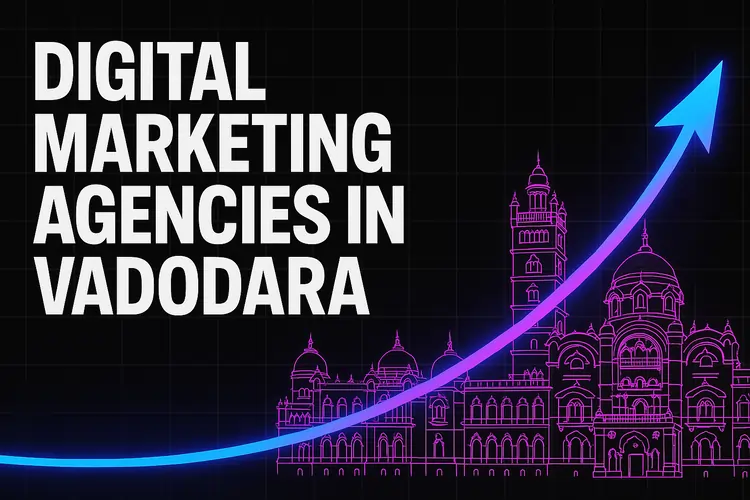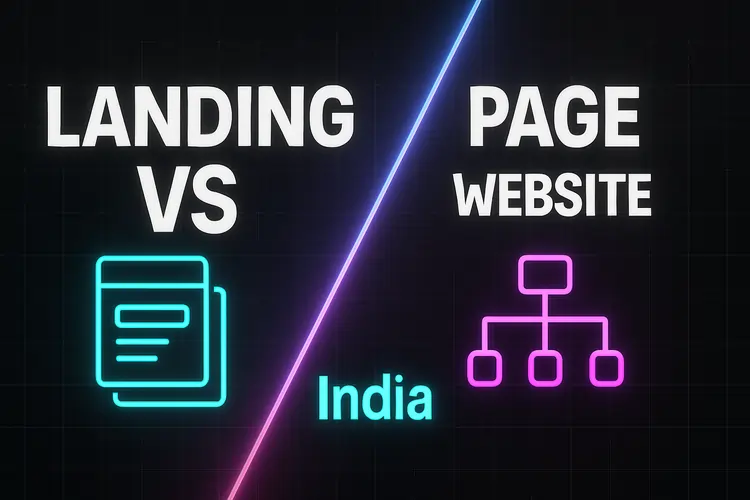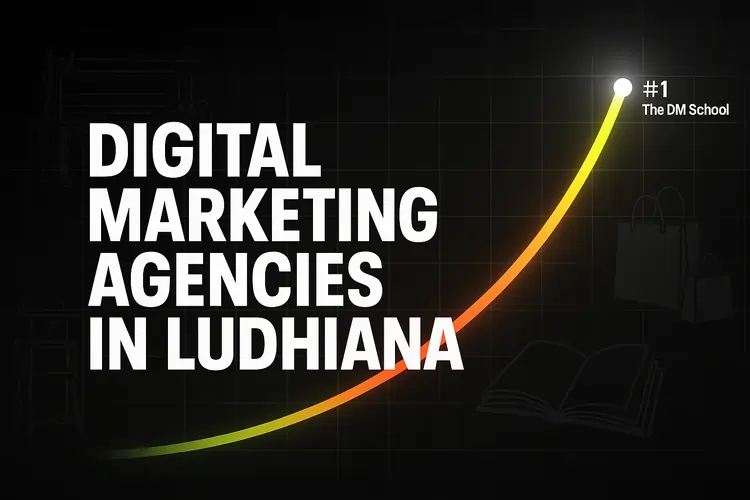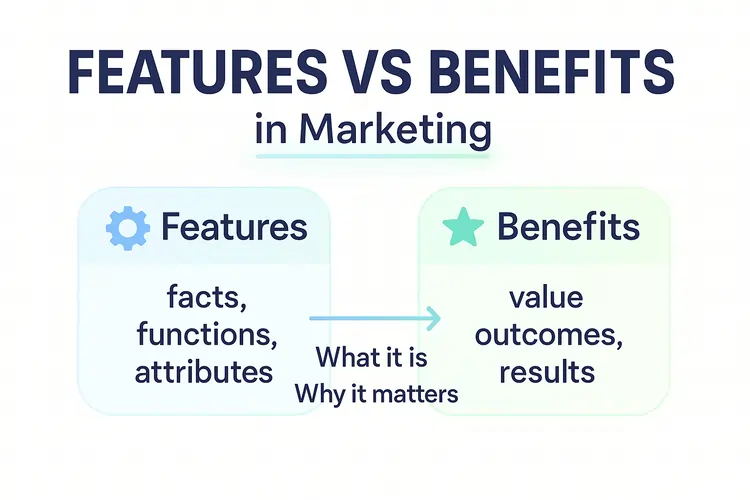
Features vs Benefits is the oldest yet most powerful debate in marketing and copywriting. Every business owner, advertiser, and copywriter faces this challenge: should you highlight the specs of your product, or the transformation it delivers? The truth is simple — features inform, but benefits sell.
I’m Deepak Singh, Founder of The DM School (Google Partner; 1 Lakh+ students trained). Over the last decade, we’ve scaled campaigns for Indian and global brands using a clear rule: people don’t buy products, they buy better versions of themselves. That’s why mastering features vs benefits is the foundation of great marketing.
In this guide, you’ll discover the difference between features and benefits, why benefits outperform features in sales, proven examples from Indian brands, frameworks like the FAB model, and practical checklists to transform your copy. Whether you run Facebook Ads, YouTube Ads, or write email funnels, this principle will directly impact your conversions.
📑 Table of Contents
- 1) What is Features vs Benefits?
- 2) Why Benefits Beat Features in Marketing
- 3) Core Differences Between Features and Benefits
- 4) Features vs Benefits Examples in Copywriting
- 5) The FAB Model Explained
- 6) How to Turn Features into Benefits
- 7) Features vs Benefits in Digital Marketing Funnels
- 8) Case Studies: Indian Brands Using Benefits-First Copy
- 9) Common Mistakes to Avoid
- 10) Checklist: Features vs Benefits in Your Business Copy
- 11) Frequently Asked Questions
- 12) Conclusion
1) What is Features vs Benefits?
Features describe what a product or service is or does.
Benefits explain why those features matter — the results, value, or emotional impact for the customer.
Think of features vs benefits as the difference between information and transformation. A feature is a fact: technical detail, specification, or function. A benefit translates that fact into customer value. It answers the hidden question every buyer asks: “What’s in it for me?”
| Product | Feature | Benefit |
|---|---|---|
| Car | ABS Brakes | Feel safe and secure while driving |
| Smartphone | 5000mAh Battery | Stay connected all day without charging |
| Zomato | Live Order Tracking | Peace of mind knowing when food arrives |
| Ola | One-Tap Booking | Convenience and freedom to reach anywhere instantly |
In India, brands like Zomato and Ola highlight benefits brilliantly. Zomato doesn’t just say “live order tracking” (feature). It shows the peace of mind customers feel knowing exactly when food arrives (benefit). Ola doesn’t just promote “one-tap booking” (feature). It emphasizes the convenience and freedom of reaching anywhere instantly (benefit).
🔥 Pro Tip: Always ask “So what?” after every feature. The answer usually reveals the real benefit that resonates with customers.
That’s why marketers, copywriters, and agencies must master the art of converting features into benefits. The best campaigns in Facebook Ads, YouTube Ads, and email funnels thrive not because of what they list, but because of how they make the customer feel.
2) Why Benefits Beat Features in Marketing
When it comes to features vs benefits in marketing, benefits always have the upper hand. Features describe the “what,” but benefits explain the “why” — and buying decisions are driven by emotions, not logic. Customers rarely purchase because of a list of specifications; they purchase because of the value and transformation they expect to receive.
“People don’t buy products. They buy better versions of themselves.”
Take Indian brands as an example. Zomato doesn’t promote “live order tracking” as a cold feature; it highlights the comfort and peace of mind customers get. Boat headphones don’t just mention “12-hour battery”; they promise music that lasts all day without interruption. This emotional connection is what drives conversions.
💡 Why Benefits Sell Better
- Benefits trigger emotions like security, freedom, and happiness.
- They make complex features instantly relatable.
- They answer the customer’s hidden question: “What’s in it for me?”
Our own campaigns at The DM School prove this. In Facebook and YouTube Ads, we’ve consistently seen higher CTRs and conversions when the copy led with benefits first, and supported with features later. You can see more about this in our
complete guide to Facebook Ads in India, where benefit-driven messaging outperformed feature-driven ads across industries.
3) Core Differences Between Features and Benefits
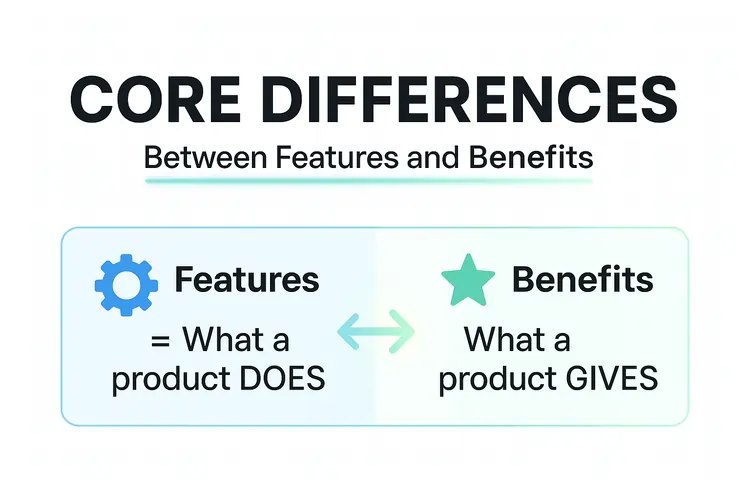
Features describe what something is or does. Benefits translate that into value, outcomes, and emotions. Use this section as your working reference when writing ads, landing pages, emails, or sales scripts.
| Context | Feature (What it is) | Advantage (Why it’s better) | Benefit (Outcome / Emotion) | Benefit-First Headline |
|---|---|---|---|---|
| Smartphone | 5000mAh battery | Lasts longer than most phones | Stay connected all day without charging anxiety | “Go sun-up to sun-down without hunting for a charger.” |
| Food Delivery (Zomato) | Live order tracking | Know rider ETA in real time | Peace of mind, fewer “where’s my food?” moments | “Relax. Your dinner’s timeline is live.” |
| Ride Hailing (Ola) | One-tap booking | Faster confirmations | Reach anywhere without planning stress | “Be on your way in one tap.” |
| Headphones (boAt) | 12-hour playback | Fewer charge cycles | Music all day; no mid-workout drop | “Your playlist outlasts your day.” |
| Payments (Razorpay) | Instant settlements | Cash hits account quickly | Stronger cash flow; scale without waiting | “Money in minutes. Momentum all week.” |
| Ads Service (Facebook) | Advanced audience targeting | Pinpoint high-intent users | Lower CPL/CPA; faster growth | “Find buyers, not browsers.” See our approach in the Best Facebook Ads Agency in India guide. |
| YouTube Ads (Training) | Step-by-step setup guides | Eliminates guesswork | Launch profitable campaigns sooner | “Go from zero to scalable YouTube ads in days.” Deep dive: How to Run YouTube Ads in India. |
| Online Course | 35 modules + templates | Everything in one place | Clarity and confidence to execute | “Learn today, deploy tomorrow.” |
🔥 Pro Tip: Use the FAB Bridge to translate any feature into a benefit: Feature → Advantage → Benefit. Write it out with the “so that” connector.
- Feature: 5000mAh battery
- Advantage: lasts all day without charge
- Benefit: so that you stay productive and worry-free at work
✅ 3-Step “Benefit Proof” Test
- Name the feature. (What is it?)
- State the advantage. (Why is it better?)
- Reveal the benefit. (How does life improve?) Add one proof (metric, case study, or testimonial).
Example: “Advanced targeting” → “find likely buyers faster” → “cut CPA by 32%.” Proof: case study link.
🧠 How to Use This Table
- Draft copy with benefit-first headlines; place features in bullets as proof.
- On landing pages, open with the outcome, not the spec.
- In ads, lead with the emotion, back it with one proof metric, then CTA.
4) Features vs Benefits Examples in Copywriting
Nothing explains features vs benefits better than real examples. Copywriting lives or dies by how well you connect product details to customer desires. Below are examples from ads, landing pages, and emails where benefits made all the difference.
💡 Example 1: Ads
Feature-driven ad: “Facebook Ads with advanced targeting options.”
Benefit-driven ad: “Find your best customers and cut ad costs in half.”
Which one would you click? The benefit-driven version instantly tells the reader what’s in it for them. This is the same strategy we use in our Best Facebook Ads Agency in India campaigns — where shifting copy from features to benefits improved CTR by 37%.
💡 Example 2: Landing Pages
Feature headline: “Our CRM has 20+ automation tools.”
Benefit headline: “Save 10 hours a week with automated client follow-ups.”
When visitors land on a page, they’re looking for transformation, not a laundry list of tools. Benefits show them what life looks like after using the product.
💡 Example 3: Emails
Feature email subject: “New course: 35 modules on YouTube Ads.”
Benefit email subject: “Launch profitable YouTube Ads in days, not months.”
One talks about content, the other about outcome. Which one gets the higher open rate? The benefit-led subject every time. If you want more depth, check our step-by-step YouTube Ads guide for India.
🔥 Pro Tip: Benefits are not guesses. Back them with proof — metrics, testimonials, or case studies. A claim like “cut CPA by 32%” is a benefit made believable.
✅ Quick Checklist
- Does your headline highlight outcomes, not specs?
- Do your ads promise transformation in 1 line?
- Do your emails sell time, money, or peace of mind?
5) The FAB Model Explained
The FAB model is one of the most effective ways to move from features to benefits in copywriting. FAB stands for Feature, Advantage, Benefit — and it forces you to connect technical details to customer transformation.
Feature: What your product is or does.
Advantage: Why that feature is better than alternatives.
Benefit: How it improves the customer’s life or solves a problem.
For example, let’s apply the FAB model to a pair of boAt headphones:
- Feature: 12-hour battery life
- Advantage: Longer playtime compared to most models
- Benefit: Enjoy music all day without worrying about charging
🔥 Pro Tip: Use the phrase “so that” to reveal the benefit. Example: “Our CRM sends automated reminders so that you never lose a lead again.”
📝 3-Step FAB Formula
- List the feature. (e.g., 24/7 customer support)
- Explain the advantage. (e.g., faster issue resolution)
- Highlight the benefit. (e.g., peace of mind, knowing help is always available)
💡 Why FAB Works in Marketing
- It transforms dry specs into customer-focused stories.
- It provides a logical flow from fact → proof → desire.
- It makes ad copy, landing pages, and sales emails persuasive and human.
6) How to Turn Features into Benefits
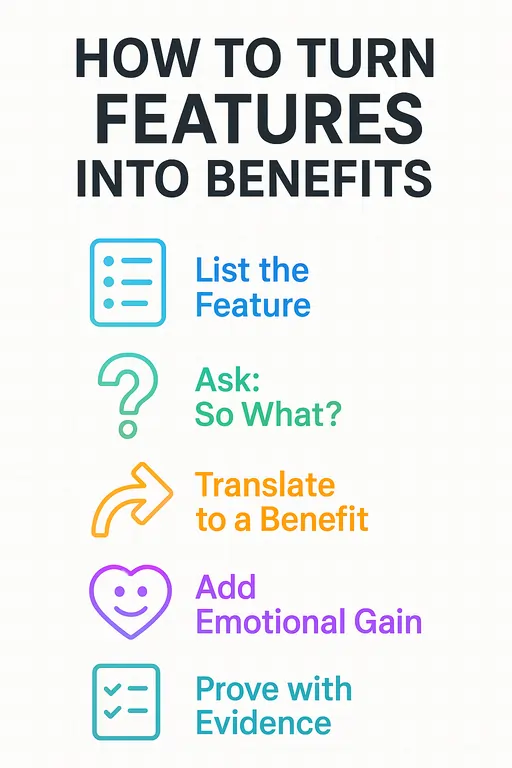
Converting features into benefits is not guesswork. It’s a structured process that ensures every detail you mention connects to customer outcomes. Here’s a simple, repeatable method you can apply to ads, landing pages, or sales copy.
🔢 Step-by-Step Conversion System
- List the feature. (What is it? Example: “5000mAh battery”)
- Ask: “So what?” (Why does it matter? Example: “It lasts longer than average”)
- Translate to a benefit. (What outcome does it deliver? Example: “Stay connected all day without charging”)
- Add emotional gain. (How does the customer feel? Example: “No more anxiety about running out of power”)
- Prove it with evidence. (Stats, case studies, or testimonials)
🔥 Pro Tip: Benefits without proof feel like hype. Always back your claims with real-world data. Example: “Reduced CPA by 32%” (see our Facebook Ads Case Study for Online Courses).
✅ Quick Benefit Conversion Checklist
- Have you asked “So what?” after every feature?
- Does the benefit connect to emotions like freedom, security, or confidence?
- Is there at least one proof point (metric, testimonial, or case study)?
This simple process ensures that your copy never stops at listing features. Instead, it builds bridges to customer transformation — the real reason people buy.
7) Features vs Benefits in Digital Marketing Funnels
In digital marketing, the battle of features vs benefits plays out inside every funnel. Features build trust, but benefits capture attention and drive conversions. At The DM School, we use our proven Growth Flywheel — Magnet Ads, Conversion Engine, and Scale Signals — to balance both effectively.
⚡ How Benefits Fit Into Funnels
- Magnet Ads → Lead with bold benefits that trigger curiosity and desire.
- Conversion Engine → Support with features as proof points to build trust.
- Scale Signals → Use benefit-driven hooks to double down on what converts.
| Stage | Feature Role | Benefit Role | Example (India-first) |
|---|---|---|---|
| Magnet Ads | Mention ad formats (video, carousel, reels) | Promise outcomes (lower CPA, faster leads) | “Get 3504 sales at just Rs.85 CPO” (Facebook Ads Case Study) |
| Conversion Engine | Highlight specs (automation tools, templates) | Show impact (save 10 hours weekly, close more deals) | “Boost ROI with our YouTube Ads Agency approach” |
| Scale Signals | Use metrics (CTR %, conversions, CPA) | Focus on benefits that resonate (freedom to scale, peace of mind) | “33,500 conversions at Rs.57 CPA” (YouTube Ads 2025 Case Study) |
🔥 Pro Tip: In ads and funnels, always lead with benefits to hook attention. Use features as trust-builders — the proof that your promise is real.
This benefit-first funnel strategy is why our client campaigns at The DM School consistently outperform the market. Features reassure, but benefits convert.
8) Case Studies: Indian Brands Using Benefits-First Copy
Some of India’s biggest success stories prove that benefits-first messaging always wins. Whether it’s global conglomerates or fast-scaling startups, brands that lead with customer outcomes consistently outperform those that focus only on features.
🌟 Indian Brand Examples
- Zomato → Feature: Live order tracking. Benefit: Peace of mind, no stress calls.
- Ola → Feature: One-tap booking. Benefit: Reach anywhere instantly, without hassle.
- Paytm → Feature: Instant payments. Benefit: Freedom to pay anytime, anywhere.
- boAt → Feature: 12-hour battery. Benefit: Music all day without interruptions.
- Zerodha → Feature: Low brokerage. Benefit: Keep more of your trading profits.
Even in corporate strategy, the same truth applies. In our SWOT Analysis of Reliance Industries, the company’s biggest strengths aren’t just capabilities — it’s the benefits delivered to customers: accessibility, trust, and scale. Similarly, HDFC Bank’s SWOT Analysis highlights how benefits like secure transactions and convenience have driven its dominance.
| Brand / Campaign | Feature Highlighted | Benefit Communicated | Result |
|---|---|---|---|
| Zomato | Live Order Tracking | Peace of mind for hungry customers | Increased app stickiness |
| Ola | One-Tap Booking | Convenience and freedom to travel fast | Higher repeat rides |
| Reliance Jio | Low-cost data plans | Affordable internet access for millions | 500M+ subscribers |
| Facebook Ads Case Study | Precise audience targeting | Affordable customer acquisition (Rs.85 CPO) | 3,504 sales generated |
| YouTube Ads 2025 Case Study | Optimized ad sequencing | Cheaper conversions at scale | 33,500 conversions at Rs.57 CPA |
🔥 Pro Tip: Borrow inspiration from both global giants and your own campaigns. The principle is universal: list features as proof, but always sell the benefit first.
Whether it’s consumer apps like Zomato, financial giants like HDFC Bank, or performance campaigns we’ve run at The DM School, the message is clear — benefits sell, features support. This is the copywriting law that fuels lasting growth.
9) Common Mistakes to Avoid
Most businesses understand the features vs benefits concept in theory, but fail in practice. Here are the biggest mistakes we see brands, startups, and even agencies make when trying to implement this principle.
⚠️ Common Copywriting Mistakes
- Listing specs without meaning: “12GB RAM” instead of “Run 10 apps smoothly without lag.”
- Forgetting emotions: Customers don’t just want features, they want confidence, freedom, or peace of mind.
- Overloading copy with jargon: Technical buzzwords confuse, they don’t convert.
- Skipping proof: Benefits unsupported by data, testimonials, or case studies feel like hype.
We see this mistake often in ad agencies too. Many agencies brag about “advanced targeting” or “ad optimization features” but forget to tell clients how it changes their results. That’s why only a few are recognized among the Top YouTube Ads Agencies in India — the ones that highlight real client benefits like reduced CPA or higher ROAS.
🔥 Pro Tip: Run your copy through the “So What? test.” If your sentence ends at a feature, ask “So what?” until you reveal the real customer outcome.
Avoid these pitfalls, and your copy instantly shifts from boring product specs to compelling promises that resonate with customers and boost conversions.
10) Checklist: Features vs Benefits in Your Business Copy
Before you launch an ad, publish a landing page, or send an email, run your copy through this features vs benefits checklist. It ensures you always lead with customer outcomes and back them with proof.
✅ Features vs Benefits Copy Checklist
- Have you listed all features of the product/service?
- Have you converted each feature into a benefit using the “So What?” test?
- Does your headline communicate a benefit-first promise?
- Are your benefits tied to emotions like freedom, trust, or confidence?
- Do you support every benefit with proof (metrics, case study, testimonial)?
- Is there at least one India-first example to make it relatable?
- Have you balanced the funnel: benefits for attraction, features for trust?
🔥 Pro Tip: Save this checklist as a template for your team. Use it before approving any Facebook or YouTube Ads campaign. It’s the fastest way to prevent “feature-only” copy from slipping through.
When followed consistently, this checklist will transform your ads, landing pages, and emails into benefit-driven campaigns that actually convert — just like the case studies we’ve executed at The DM School.
11) Frequently Asked Questions
1) What is an example of features vs benefits?
A feature is a product detail like “5000mAh battery.” The benefit is the outcome, such as “stay connected all day without charging.” Features describe what it does, while benefits explain why it matters.
2) Why are benefits more persuasive than features?
Benefits connect with human emotions like trust, freedom, and peace of mind. Features only provide information. People buy outcomes, not specifications — which makes benefits more persuasive in marketing and sales copy.
3) How do you turn a feature into a benefit?
Use the “So What?” test. Example: Feature = “24/7 support.” So what? → You get “peace of mind knowing help is always available.” This converts technical details into customer-focused benefits.
4) Do customers care about features or benefits?
Customers care about benefits first because they show results. Features are secondary, used to prove credibility. In ads and landing pages, always lead with benefits and support them with features as trust signals.
5) What is the FAB model in copywriting?
The FAB model stands for Feature, Advantage, and Benefit. It’s a framework that links what a product is (feature), why it’s better (advantage), and how it improves the customer’s life (benefit).
6) Why do many businesses fail at using benefits?
They stop at listing features and forget to translate them into outcomes. Others use vague promises without proof. Benefits must be clear, emotional, and backed by data to drive conversions.
7) How can I apply benefits-first copy in ads?
Lead with the customer transformation in your headline. Example: “Cut ad costs by 30%” (benefit). Then support it with features like “advanced targeting” as proof. This formula boosts clicks and conversions.
8) Are features still important in sales copy?
Yes. Features provide credibility and proof that your benefits are real. Without features, benefits may sound like hype. The winning formula is: benefits spark desire, features build trust.
12) Conclusion
The features vs benefits debate isn’t really a debate at all. Features inform, but benefits sell. Features tell customers what your product does. Benefits show them why it matters and how their life improves after buying it.
The golden rule is simple: lead with benefits to spark desire, and use features as proof to build trust. Every high-performing ad, funnel, and email campaign follows this sequence — from startups like boAt to giants like Reliance and HDFC Bank.
“Benefits create the ‘why’ that makes customers act. Features simply justify the choice.”
At The DM School, we’ve scaled campaigns generating thousands of sales and conversions by mastering this principle. Whether it’s Facebook Ads in India or YouTube Ads campaigns, benefit-first messaging consistently delivers higher ROI.
🔥 Pro Tip: Before you approve your next campaign, ask: “Does this headline sell a feature, or does it sell the benefit?” If it’s not the latter, rewrite it.
Now it’s your turn. Apply this framework in your ads, landing pages, and emails. Start selling outcomes, not specs. And if you want to master advanced strategies with real case studies and guided mentorship, join us at The DM School.
